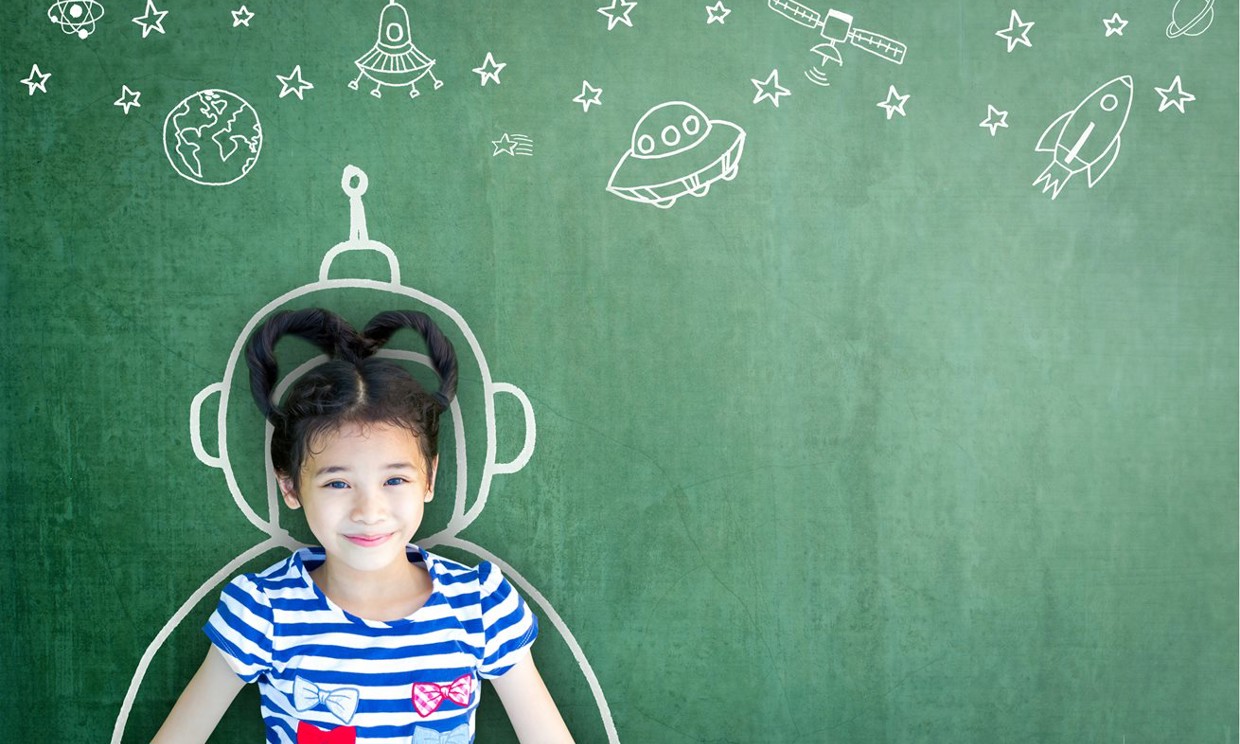Did you know that when your child uses magnetic blocks to build a house, he or she is acting as an engineer would – designing, building, testing and solving problems?
At the same time, that child is using mathematical concepts as they measure the heights of the blocks, or test the weight to see if the structure will survive.
While much of this learning and testing is a natural process, the teaching of STEM (science, technology, engineering and maths) is becoming more and more important in early learning.
Research (McClure et al, 2017) shows that children can and should engage in STEM learning, even in the earliest years of their lives. The above examples show that children are capable of learning about STEM concepts and processes. In the early years, a STEM curriculum can encourage children to design, invent, and revisit their thinking and figuring how things work.
And while less students are studying maths and science in senior high school, particularly girls, research shows strength in STEM is liked to economic prosperity of developed countries.
At Goodstart Early Learning Noble Park, the kindergarten children are incorporating STEM processes into everyday experiences, interactions and routines.
Centre director Ebonie Williamson said in the indoor and outdoor learning areas, subject matter from science, technology, engineering and maths are used every day.
“As children explore with their minds and with their senses, they use critical thinking process and engage in sustain investigation, observing, asking questions, designing, building, testing, and solving problems,” Ms Williamson said.
In the early learning years, the aim is to integrate STEM into the daily routine of children by following interests and making learning fun. Children are naturally curious and want to explore their environments.
At Goodstart Tapping, ECT Catherine Corunna organised for the centre to host a Scitech early learning program for the three to five year old children.
Supported by the research into early brain development, the Scitech Early Childhood program encourages children to take part in hands-on learning and self-discoveries about science.
The hour-long workshop is divided into four learning areas that children can explore at their own pace: light, push and pull, living things, sound. Activities include playing with shadows and light, creating sounds, identifying smells and investigating invertebrates.
Ms Corunna said the children enjoyed using forces such as pulling and pushing toys, modifying different slopes and working out how much force was needed to make objects move.
“All of these experiences have contributed to the planning being implemented in our STEM program this year,” Ms Corunna said.
STEM TIPS FOR PARENTS AND EDUCATORS
At the same time, that child is using mathematical concepts as they measure the heights of the blocks, or test the weight to see if the structure will survive.
While much of this learning and testing is a natural process, the teaching of STEM (science, technology, engineering and maths) is becoming more and more important in early learning.
Research (McClure et al, 2017) shows that children can and should engage in STEM learning, even in the earliest years of their lives. The above examples show that children are capable of learning about STEM concepts and processes. In the early years, a STEM curriculum can encourage children to design, invent, and revisit their thinking and figuring how things work.
And while less students are studying maths and science in senior high school, particularly girls, research shows strength in STEM is liked to economic prosperity of developed countries.
At Goodstart Early Learning Noble Park, the kindergarten children are incorporating STEM processes into everyday experiences, interactions and routines.
Centre director Ebonie Williamson said in the indoor and outdoor learning areas, subject matter from science, technology, engineering and maths are used every day.
“As children explore with their minds and with their senses, they use critical thinking process and engage in sustain investigation, observing, asking questions, designing, building, testing, and solving problems,” Ms Williamson said.
In the early learning years, the aim is to integrate STEM into the daily routine of children by following interests and making learning fun. Children are naturally curious and want to explore their environments.
At Goodstart Tapping, ECT Catherine Corunna organised for the centre to host a Scitech early learning program for the three to five year old children.
Supported by the research into early brain development, the Scitech Early Childhood program encourages children to take part in hands-on learning and self-discoveries about science.
The hour-long workshop is divided into four learning areas that children can explore at their own pace: light, push and pull, living things, sound. Activities include playing with shadows and light, creating sounds, identifying smells and investigating invertebrates.
Ms Corunna said the children enjoyed using forces such as pulling and pushing toys, modifying different slopes and working out how much force was needed to make objects move.
“All of these experiences have contributed to the planning being implemented in our STEM program this year,” Ms Corunna said.
STEM TIPS FOR PARENTS AND EDUCATORS
- Look around you and notice what is going on in your environment. Are the leaves changing colour? Are there new buds on plants? Share your observations with children and talk about why these things may be happening.
- Ask children to describe colours, shapes and the things they see or do. This helps them increase their vocabulary and analyse things around them. What colour, shape and size is the lizard?
- Encourage children to think about where they are in relation to what may be around them. If in a childcare centre, show them a map and show them where they are standing in relation to the map. If you’re out driving, point out landmarks so they know where they’re going next time.
- Ask what questions, rather than why. “What colour is the water?” rather than “Why is the water changing colour?”


